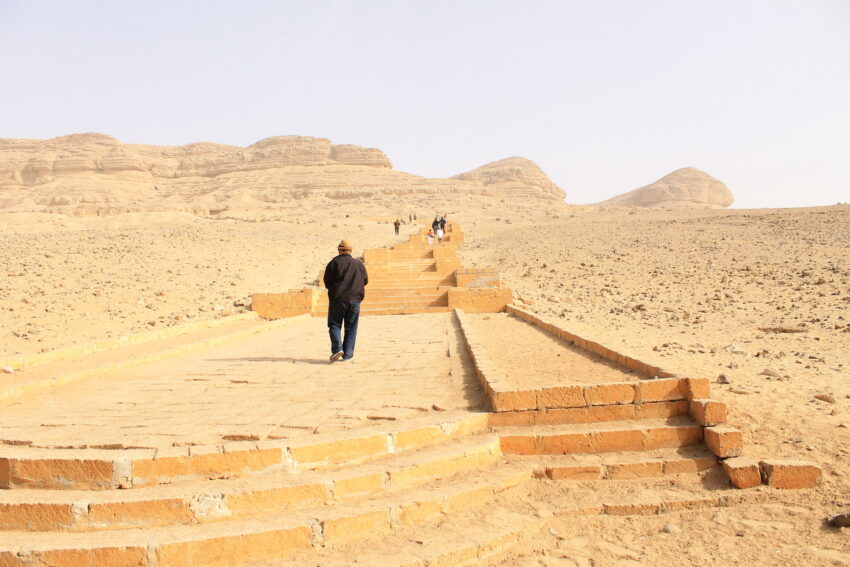
Tombs of Beni Hassan, Menia, Egypt are located on the eastern bank of the Nile River, in what corresponds to Middle Egypt. The necropolis is located 20 kilometers away to the south of El-Minya, almost 300 kilometers south of the capital El Cairo. This hidden treasure offers a rare chance to take a look at how life was like in the heyday of ancient Egypt’s Middle Kingdom.
Activity/Place Highlights
Out of the 39 tombs, only four are open to the public. On the walls of these tombs, you can see scenes of everyday life. For example, people hunting, fishing, writing on papyri, trading, and farming, as well as scenes of battles, sports competitions, and funerary rites.
Despite all the years that have passes, many tombs were found intact. For this reason, they have provided great information about the funeral rites of this period.
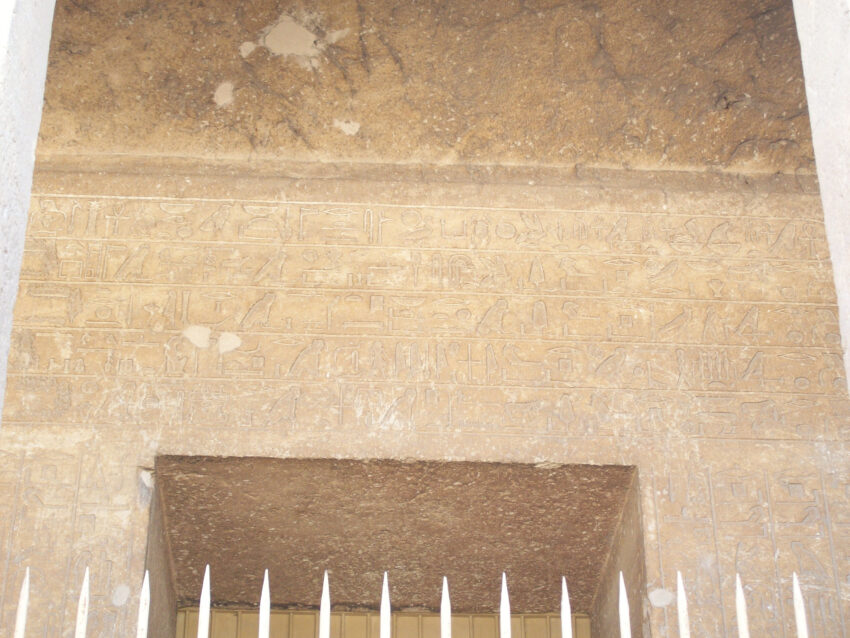
Beni Hassan Tomb 2: The Tomb of Amenemhat
Also known as Ameny, Amenemhat lived during the 7th period. His tomb is more complicated compared to some of the others at Beni Hassan, and the decorations on the walls are more detailed. The shades of bright green on these walls stand out from the typical egyptian images.
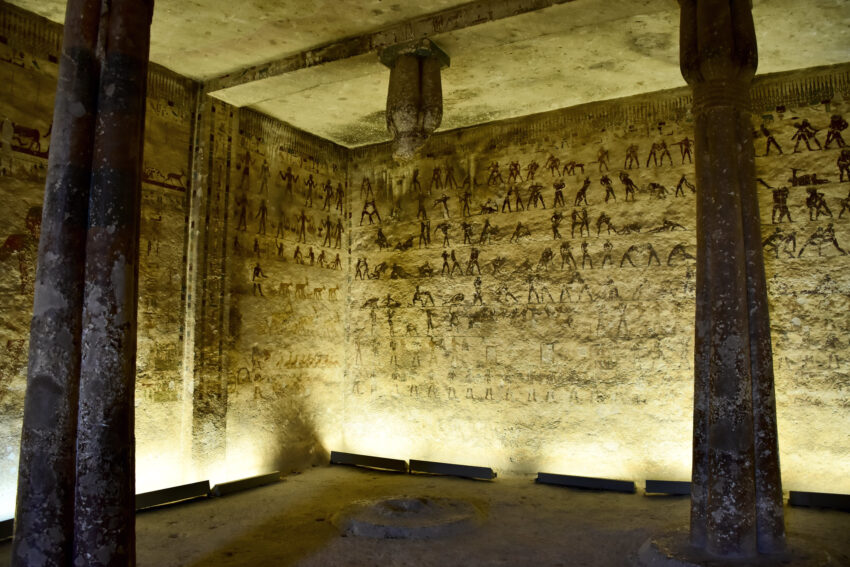
The walls of the tomb of Amenemhat have paintings similar to others within Beni Hassan, like scenes of wrestling. Mainly, the paintings include Amenemhat in both daily life and military activities. On the southern wall, Ameny sits at a table with a large number of offerings, alongside his wife, Hetepet.
Other scenes in Amenemhat’s tomb include the ritual “Journey to Abydos”, as well as many artisans and farmers at work and hunting in the desert.
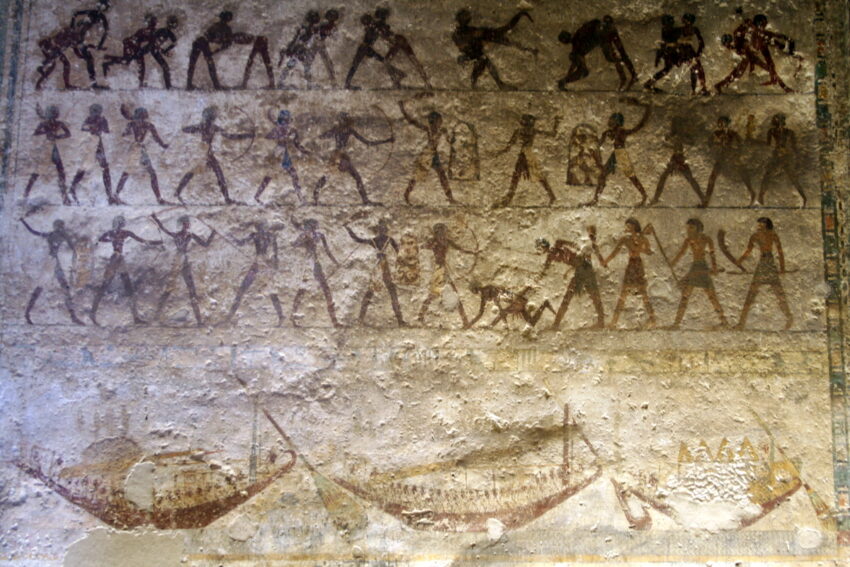
Beni Hassan Tomb 3: The Tomb of Khnumhotep II
In Beni Hassan, the Tomb of Khnumhotep is one of the most renowned. In the main chamber, you can find an autobiography, running counterclockwise around the walls. It represents many actions Khnumhotep II performed during his lifetime, his family and their lives as well. On these walls, Khnumhotep also represents his request to visitors for offerings.
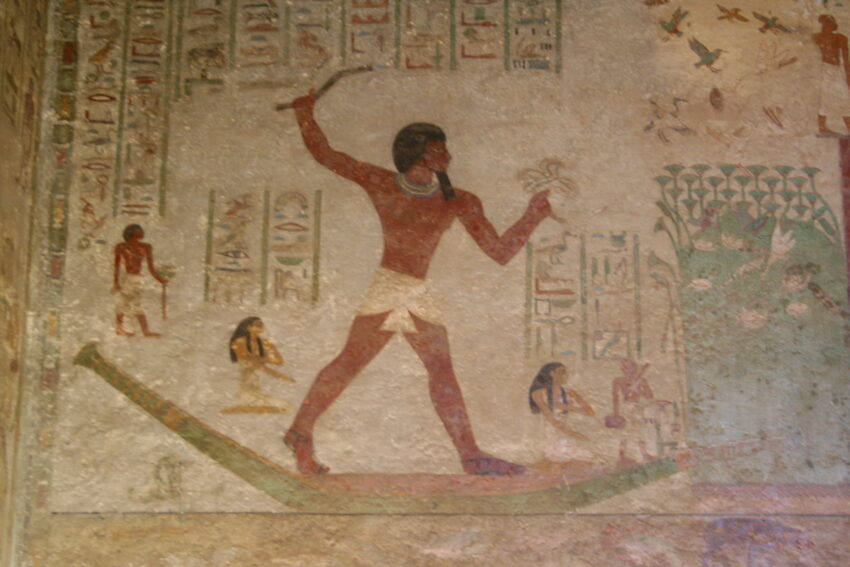
On the northern wall, you will find a large standing figure of Khnumhotep II receiving many species of animals as offerings. However, the detailed scene that makes this tomb stand out at Beni Hassan, is the painting of the Aamu group. This painting represents Asiatic nomadic traders, led by a man called Absha, bringing offerings to the deceased.
Additionally, you will find two large paintings of Khnumhotep II hunting in the marshes. These scenes were believed to help protect the deceased in the afterlife, and guarantee his rebirth.
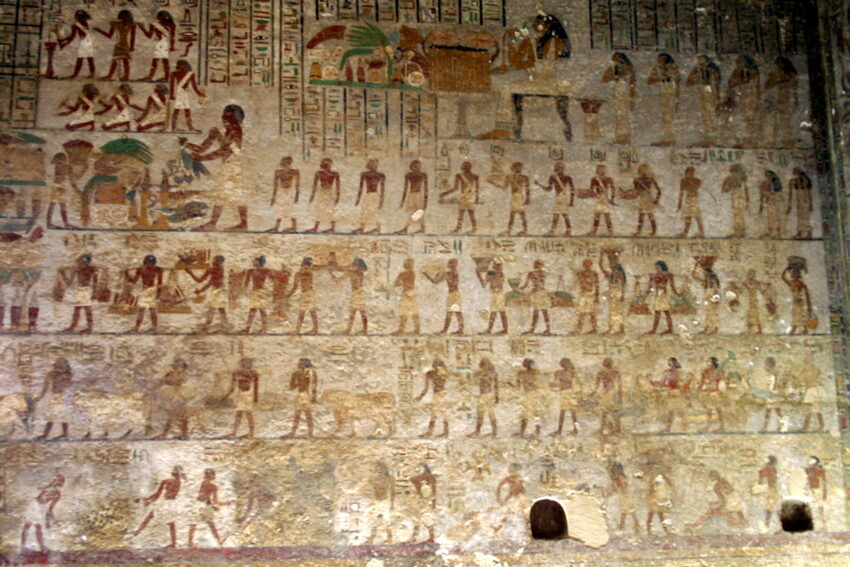
Beni Hassan Tomb 15: The Tomb of Baqet III
Even though it was numbered as the 15th Tomb of Beni Hassan, the Tomb of Baqet III was actually the first one to be excavated. The tomb of Baqet, a ruler of a province during the ruling period, is rather simple: a rectangular shape and two pillars with lotus plant sculpt. Other than that, it doesn’t have any outstanding architectural features. However, its remarkable paintings alone turn it into one of the most famous.
The tomb’s northern wall shows Baqet and his wife in their daily life, chasing birds and hunting for animals, including fantastic creatures. In addition, on the eastern wall you will find the most renowned painting: an impressive number of wrestling positions and techniques.
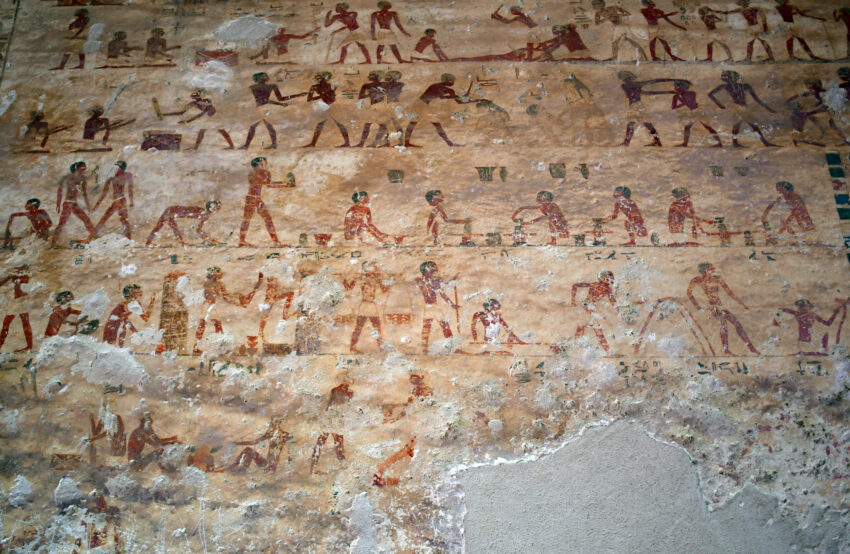
Finally, the southern wall shows Baqet’s funeral and burial. Besides, you can also see images of him sitting with his family, and others of people playing senet, one of the oldest board games. For this reason, this is considered the most traditional wall, maybe even out of all 39 Beni Hassan tombs.
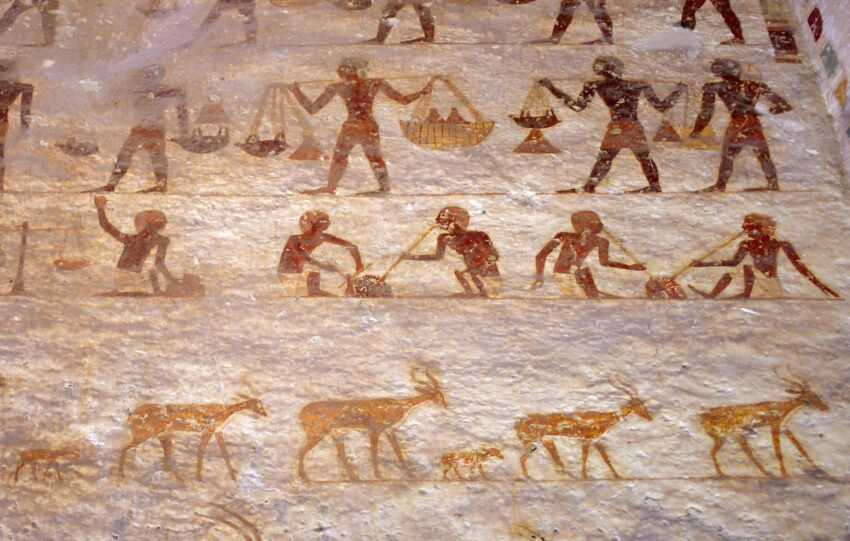
Beni Hassan Tomb 17: The Tomb of Khety
Khety was the son of Baqet, and he worked in the same position as his father: he was also a ruler of a province located near El-Minya. It is believed that this is the reason why his tomb resembles that of his father.
Instead of two, the Tomb of Khety has six lotus shaped columns on his rectangular-shaped structure. An extraordinary feature is the depth of the burial pit in the tomb. The eastern and northern walls represent Khety during his hunting trips in the deserts.
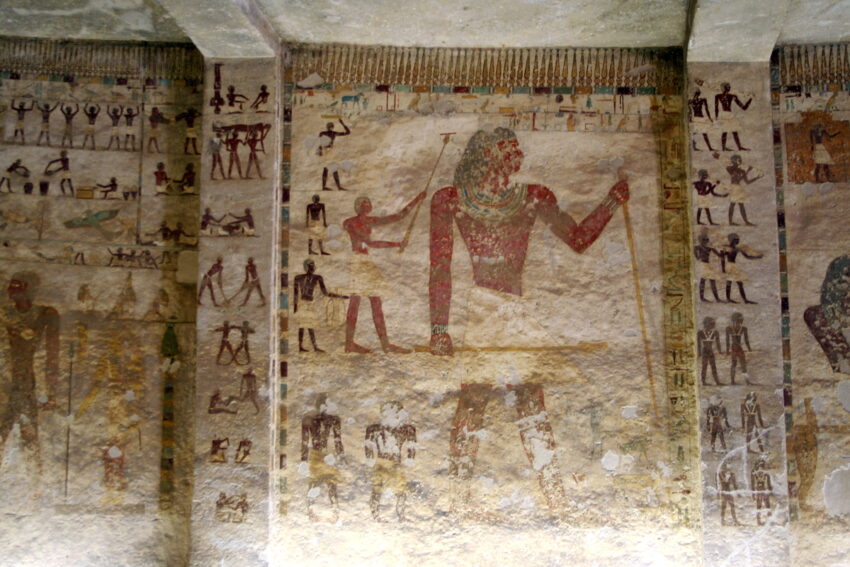
Some paintings display Khety and his wife supervising the activities taking place in the province. Meanwhile, the eastern wall has paintings of soldiers practicing and getting ready for battles. The use of different shades to demonstrate the movement of each soldier during their training is a complete marvel.
Last but not least, the wall located in the southern section of the tomb shows Khety supervising the process of making wine. There are some burial rituals displayed in this section as well.
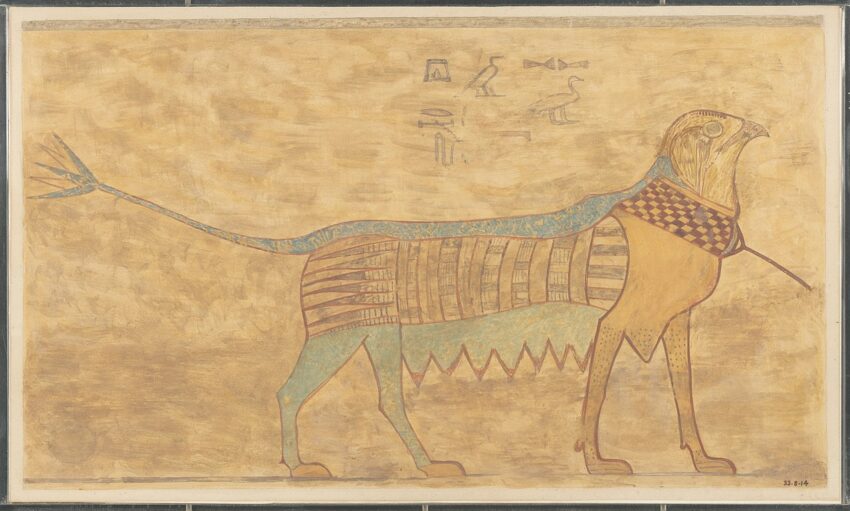
The colors on all the paintings inside every tomb are so vivid that it seems that the images were painted yesterday. Even if they are merely representations, just looking at them transports you to life in Ancient Egypt. If you concentrate, you can feel everything becoming movement and energy, like it used to be in the 11th dynasty.
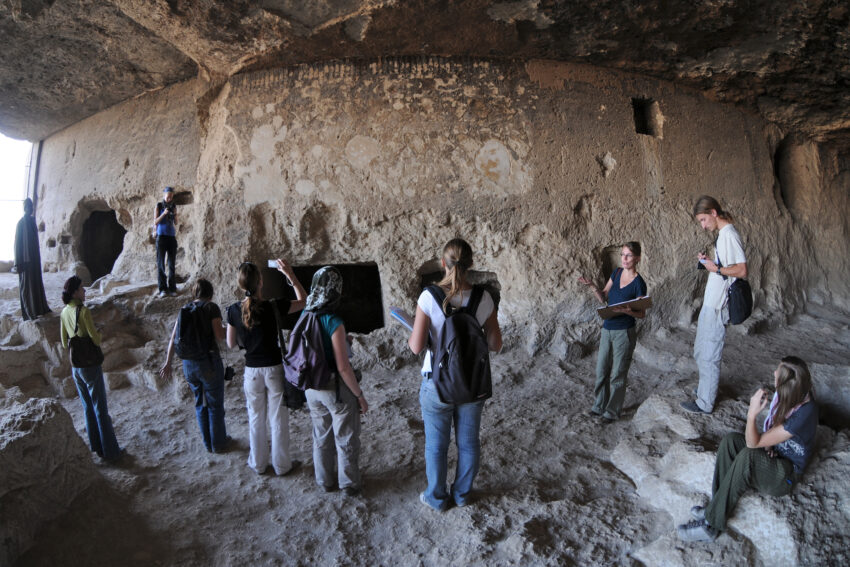
How to get there
Beni Hassan is 12 miles south of the city of Minya. It may be possible to reach the site by taxi from Minya, but the best way to visit is with a guided tour or as part of a Nile cruise.
When to go
Visit in winter, when the sun shines but temperatures are pleasant.
How long
You can cruise the Nile and explore the tombs in just one day, but if you are eager to visit the surrounding sites and cities, make sure to arrange an extra day or two to explore the best of Middle Egypt.
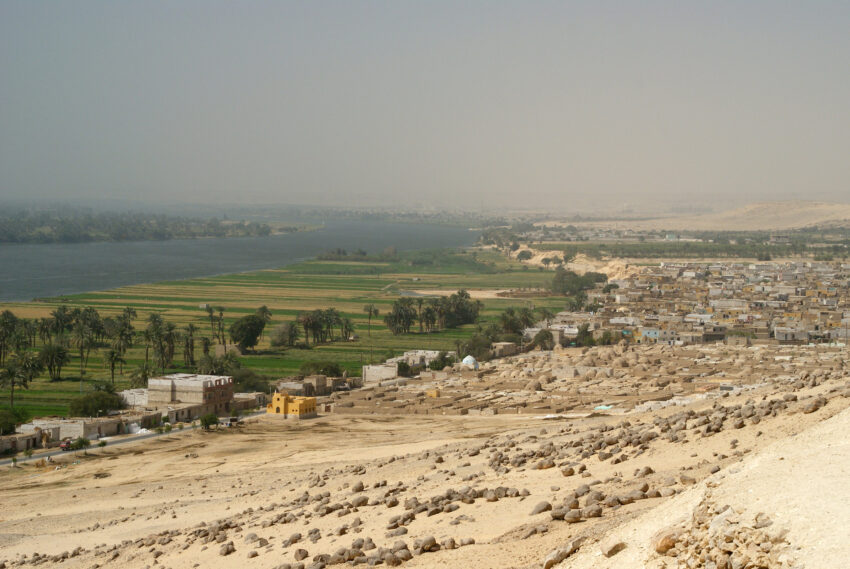
Opening and Closing Hours
The archeological site is opened every day from 7 AM to 5 PM.
Planning
Hotel rooms in Minya are usually on high demand. We recommend you reserve your room in advance to avoid any problems.
Inside Information
Some hotels have a cruise package which sails to the tombs. An amazing opportunity to enjoy the sunrise as you make your way to the site. Cruises vary from luxury cruisers to traditional feluccas with billowing sails and basic facilities. Either way, a cruise offers the chance to see historic sites and scenes of contemporary rural life along the river.
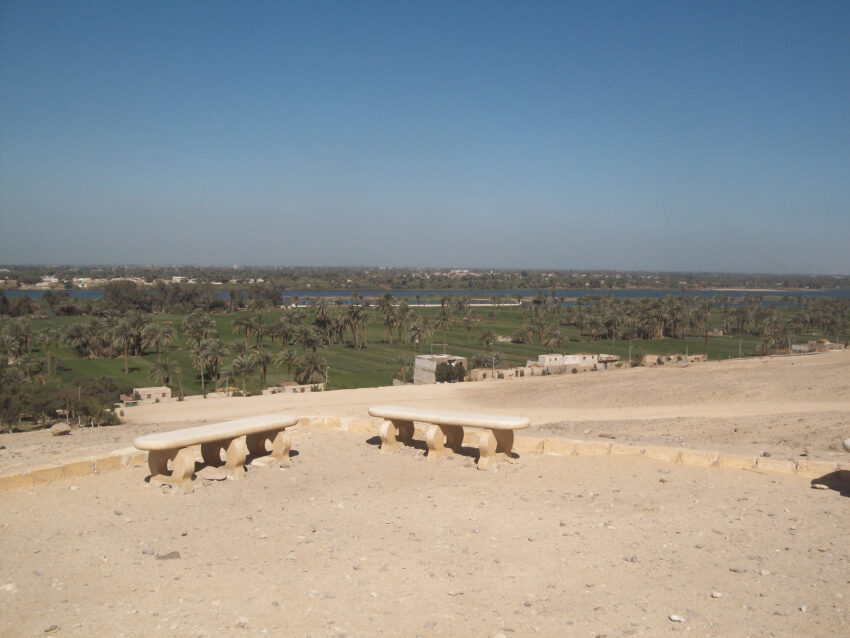
Security is tight throughout Egypt and you are likely to be escorted by civilian or uniformed guards. However, this is generally discreet and for your own safety. Besides, some people have complained about locals not being really kind when interacting with foreign people, so make sure to always be respectful.
In addition, there are around 140 steps you have to climb to get to the site, yet you can take the easier path and walk at the side of the stairs. Just take it slow and it will be fine! And once you get up there, the magnificent views of the river Nile make the climb totally worth it. At the bottom, a cozy rest house serves delicious coffee.
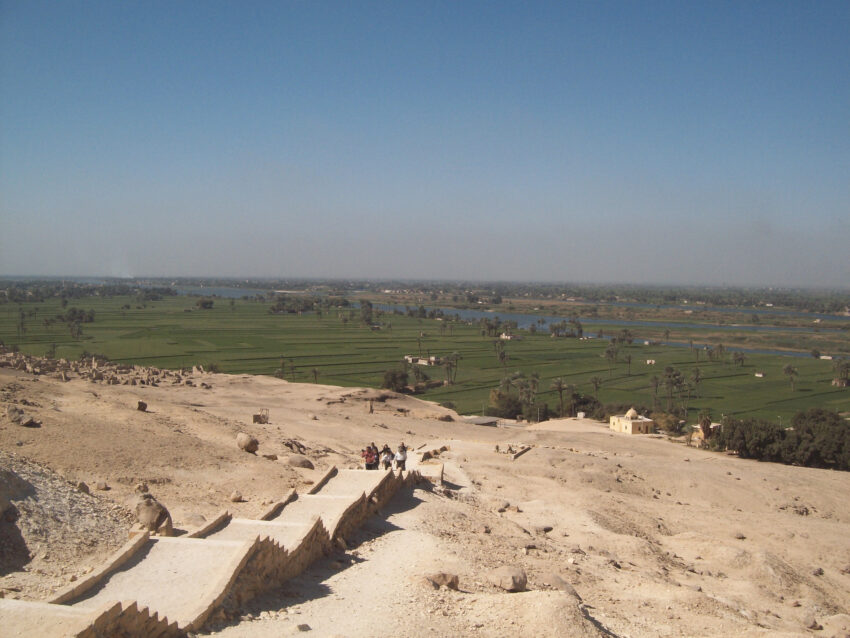
Last but not least, keep in mind that photos are prohibited inside the tombs. If you want to capture these incredible paintings, you will need to buy a permit that covers the four open tombs for 300EP (around $12). We recommend you to get a guide since some of the scenes painted are somewhat difficult to understand.
History
During the Middle Kingdom, the place was dedicated to the cult of the minor goddess Pajet which was closely linked to the coronation ceremony of the pharaohs. Currently, in the area, you can see a necropolis that has been dated from the period comprising the 11th and 12th dynasties. These 39 tombs were used by the provincial rulers of Upper Egypt.

Websites
egyptsites.wordpress.com/beni-hasan
Other nearby attractions
City of the Sun God
Some 25 miles south of Beni Hassan, on the east bank of the Nile River, you can find the city of Tell el-Amarna. The city was the capital of Akhenaten for around 14 years in the 14th century B.C. Pharaoh Akhenaten of the late Eighteenth Dynasty, and his queen, Nefertiti, built this city.
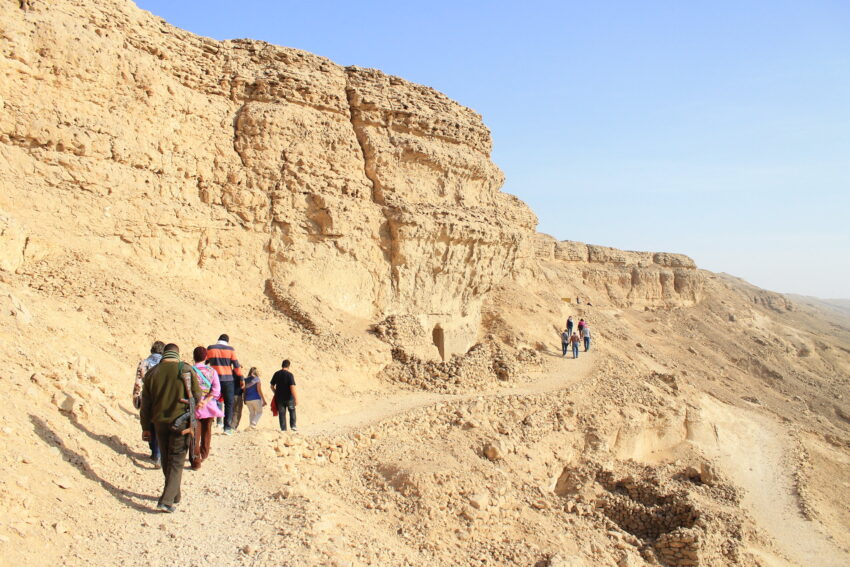
Certain parts of temples and palaces are still standing, as well as 25 cliff tombs. The paintings reflect what life used to be like in the city before it was abandoned on 1332 B.C due to Pharaoh Akhenaten’s death. Certainly, the highlights of Tell el-Amarra are the tombs of Akhenaten’s steward, chief servant, chief of police, and the High Priest of Aten.
Finally, Pharaoh Akhenaten’s tomb is tucked away in the Royal Valley, where the sun would always rise. Little remains of the decorations, but it is an atmospheric place.

If you loved this article or found it useful, don’t forget to share it with your adventurous and travel-hacking friends! If you want more posts like this, follow us on Youtube, Instagram, Pinterest, Twitter or Facebook and subscribe to our newsletter!

